1842
Swampy Sarasota, Florida was a small fishing village when the earliest white settlers
arrived.
1884
Born in 1844, Rev. Lewis Colson was a formerly enslaved man and arrived in Sarasota. Colson, the first African American settler was an assistant to Richard E. Paulson. Paulson was an engineer for the Florida Mortgage and Investment Company.
1885
Colson drove the first stake to plat the original town of Sara Sota at Five Points Park in downtown Sarasota. He worked for the Florida Mortgage and Investment Company with Robert E. Paulson. Colson’s name appears on the historic marker at the park.
1896
Louis Colson became an ordained minister in 1896. He served as pastor of Bethlehem Baptist Church from 1899-1915.
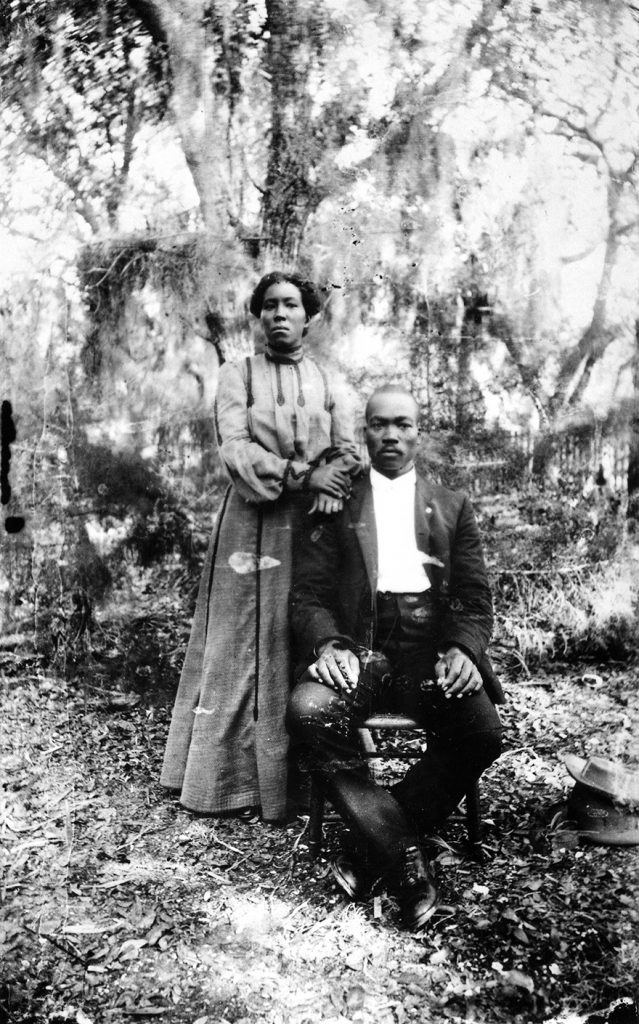
(above)Rev. Lewis Colson and his wife Irene. Mr. Colson was the first known African American settler in Sarasota (1884). Courtesy Sarasota County Historical Resources.
1897
Colson and his wife Irene donated the land to build Sarasota’s first church built by and for the African American community. The Colsons sold the deed for $1 to build Bethlehem Baptist Church.
1897
Colson and his wife Irene donated the land to build Sarasota’s first church built by and for the African American community. The Colsons sold the deed for $1 to build Bethlehem Baptist Church.
1899
Bethlehem Baptist church (now known as Bethlehem Bible Church) was completed at the corner of present day Central Avenue and 7th Street.
1903
A group of Methodists, who attended Bethlehem Baptist Church and the A.M.E. Church on the Manatee River in Bradenton united to organize an A.M.E. church in Sarasota. Founding members included: Leonard Reid, Rev. T.H. Arnold, Jerry Allen, Richard Grice and Rev. C. Conely. The Florida Mortgage & Investment Company transferred a deed for a lot at the corner of present day Central Avenue and 5th Street for the church.
1905
Payne Chapel hosted the A.M.E. Church of Florida Annual Convention of Sunday School
Workers. Colonel John Hamilton Gillespie, mayor of Sarasota and representing the Florida Mortgage & Investment Company, was one of the convention speakers. The former Payne Chapel was purchased and renovated by Pat Ball and was one of the first revitalization efforts in the Overtown/Rosemary District.
1910
Lewis and Irene Colson were members of Sarasota’s first black community. Schooling for Sarasota’s African American community began in private homes. The first kindergarten began in the home of Josie Washington. Lucinda P. Wiggins also established a kindergarten. Churches became as places of worship and schools. The number of students enrolled in Wiggins’ kindergarten increased to the point that it had to move into the basement of the Payne Chapel A.M.E. Church.
1911
Sarasota Times article reported that the Sarasota Board of Trade felt Rosemary Cemetery should be relocated. “The location, having to pass through the colored quarters to reach the cemetery, is not desirable,” said one comment.
1914
C.N. Thompson established the Newtown subdivision, located one mile north of
Overtown was 40 acres in size with 240 lots.
1915
A May 22, 1915 Sarasota Times article describes the Newtown subdivision. “Easy cash payments and over 132 lots have been sold.” Lots were donated to the Methodist and Baptist churches and for a school.
1916
Classes for blacks were first conducted in the Knights of Pythias Hall. The Knights of Pythias was a local fraternal organization located at 404 Coconut Avenue.
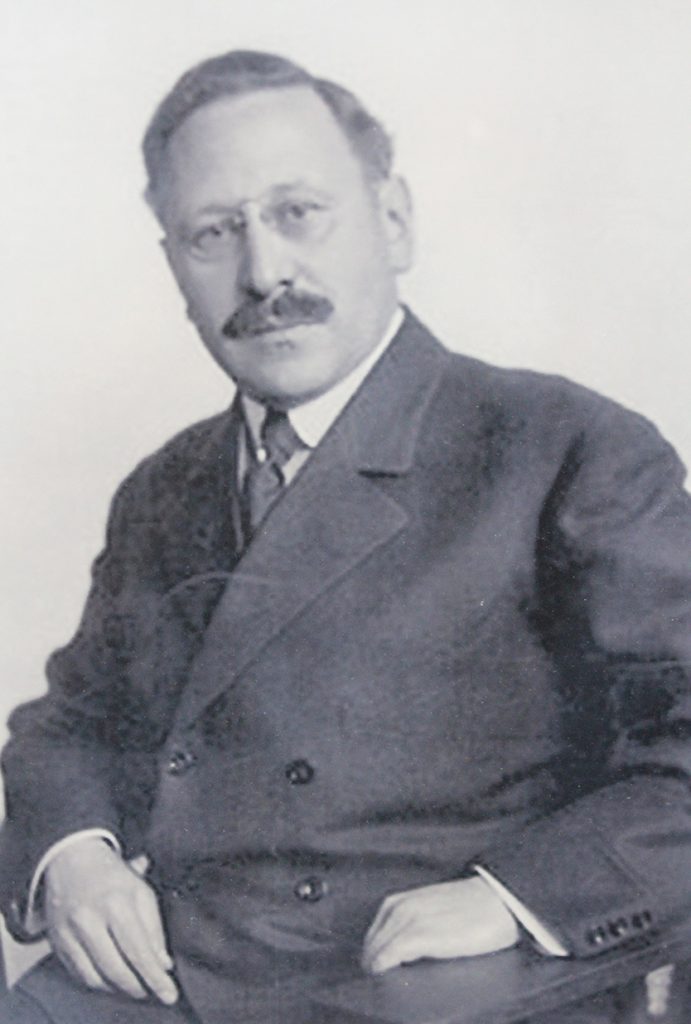
(above): Julius Rosenwald, CEO Sears Roebuck. Courtesy Sarasota County Historical Resources.
1918
Emma E. Booker arrived at Sarasota Grammar School and earned $30 a month. Classes for African American children were held in rented rooms and students used orange crates for desks. Booker led a drive to build a school for grades 1 through 8. She pushed for a high school but the district superintendent told her, “an eighth grade education was good enough any Negro.”
1920
Overtown was a thriving residential and business district with a movie theater, a baseball park, pressing clubs, restaurants, a grocery store, and general merchandise stores, many black-owned.
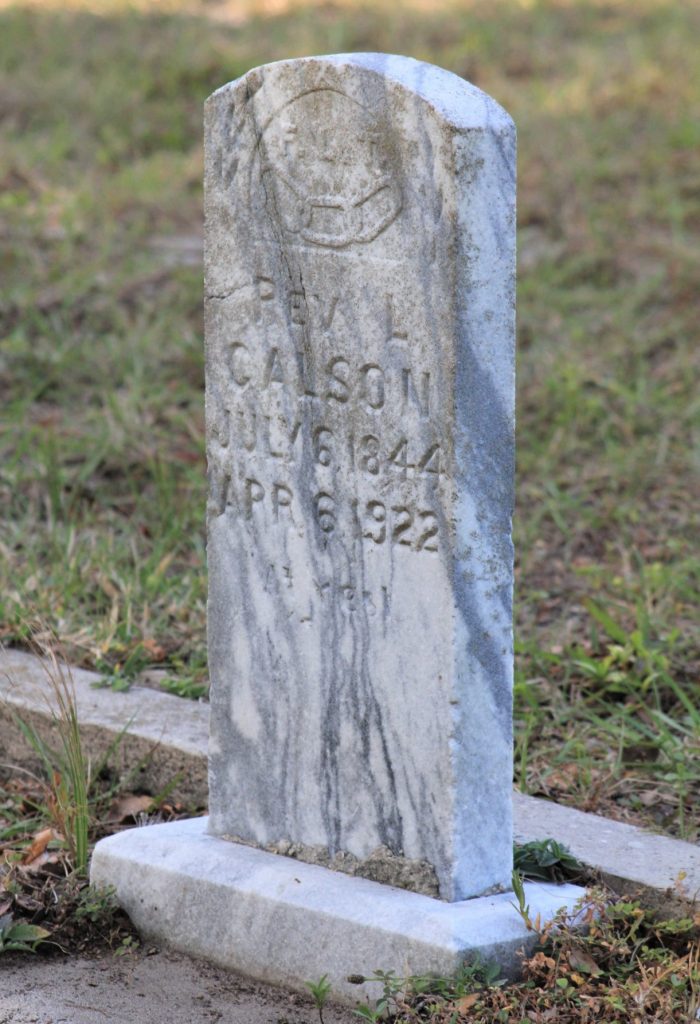
(above): Rosemary Cemetery. Courtesy Vickie Oldham Collection.
1921
Colson who died in 1922, and his wife Irene are the only African Americans buried in the historic Rosemary Cemetery.
1922
A “colored” two-room branch library was created in Overtown on present day 6 th
Street and Central Avenue.
1923
The Knights of Pythias Hall School functioned as one of the first formal schools for African Americans in Sarasota. The principal was Emma E. Booker. A ceremony for the first graduating class was held at Bethlehem Baptist Church on Central Avenue. Teachers at the Knights of Pythias Hall School included Aravia Benton Johnson, Lucinda P. Wiggins, and Mayme Williams Faulk.
1925
Sarasota Grammar School was built. Emma E. Booker raised the money and received $17,000 from Julius Rosenwald according to author Annie McElroy. Rosenwald formed a partnership with Booker T. Washington to build schools throughout the segregated south for African American children and homes for teachers. The school was located on Lemon and Seventh Street east of Central Avenue and was renamed Booker Grammar School in honor of Booker, its first principal. It opened with eight
grade levels.
1926
A devastating hurricane destroyed the original wood frame chapel of the Payne Chapel A.M.E. Church. The congregation shared the Bethlehem Baptist Church sanctuary on alternate Sundays.
The Colson Hotel, named after Lewis Colson (but not owned by him) was built by E. O. Burns. The hotel was constructed for African American tourists and residents. Later, it was renamed the Hotel Palm in the 1950s.
1935
Booker High School’s first class graduated with four students. In May 1935, the first high school graduating class from BHS had four students: Marthena Riley, Nacomi Williams (Carter), Annie Mae Blue (McElroy), and A.L. Williams.
1939
Booker High School classes and the Rosenwald building renamed Booker Grammar School were relocated to a site near Orange Avenue and 32 nd Street.
1940
City leaders encouraged the development of the more isolated Newtown area. A housing project along north Orange Avenue with 60 units was constructed in 1940. Public housing was desirable because apartments were spacious with lush green lawns and dependable electricity and water. Stricter Overtown housing codes were enforced.
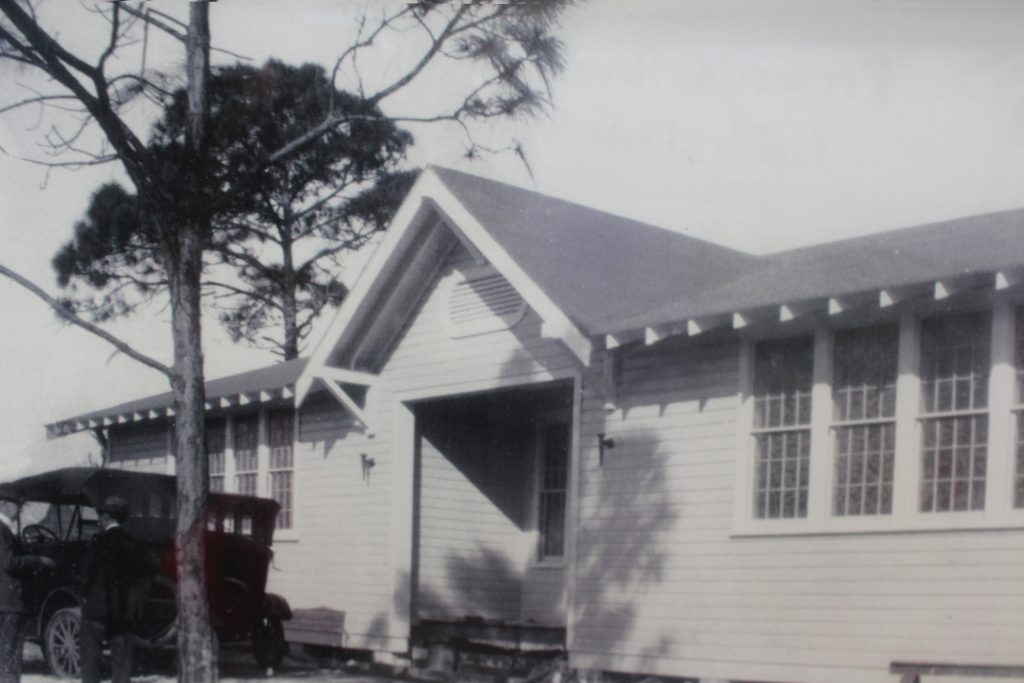
(above): Sarasota Grammar School became Booker Grammar School.
Courtesy Sarasota County Historical Resources.
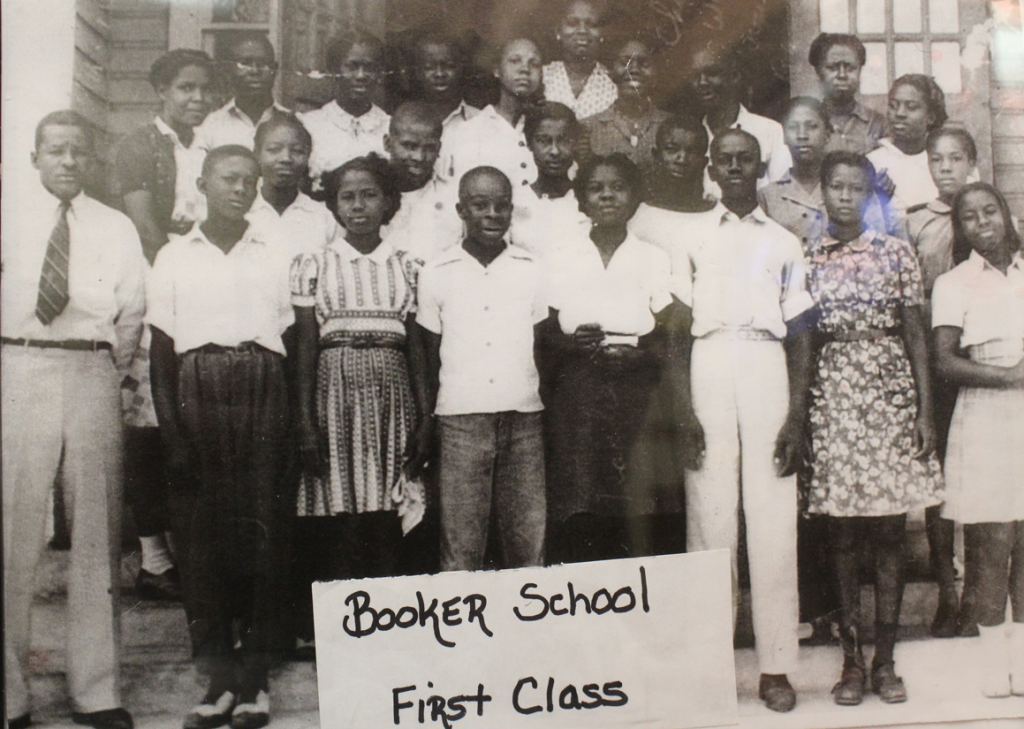
(above): Booker High School’s first class.
Courtesy Sarasota County Historical Resources.
1950
“Slum Clearance Program” by city leaders began with the demolition of housing stock. The Courts with 100 units was constructed.
1957
200 buildings were removed under the slum clearance program. More public housing units were built.
1960
Bertha Mitchell public housing facility was constructed with 100 units.
1970s
Most of the African American population had been voluntarily or involuntarily relocated.
1975
By the late 1960s, Payne Chapel’s congregation was declining. The building was deteriorating. A new Payne Chapel was built on 19th Street and Central Avenue, and the original building was abandoned. Many African American-owned businesses in Overtown closed.
1985
An increased awareness for historic preservation in the City of Sarasota developed. Historic buildings are relocated to Overtown such as the Luke Wood House and the Crocker Church.
1987
Three historic houses in Rosemary Court are relocated. An abundance of inexpensive vacant land near downtown opened the way. Historically, the houses had nothing to do with the African American community of Overtown.
1994
Overtown officially renamed “Rosemary District.”
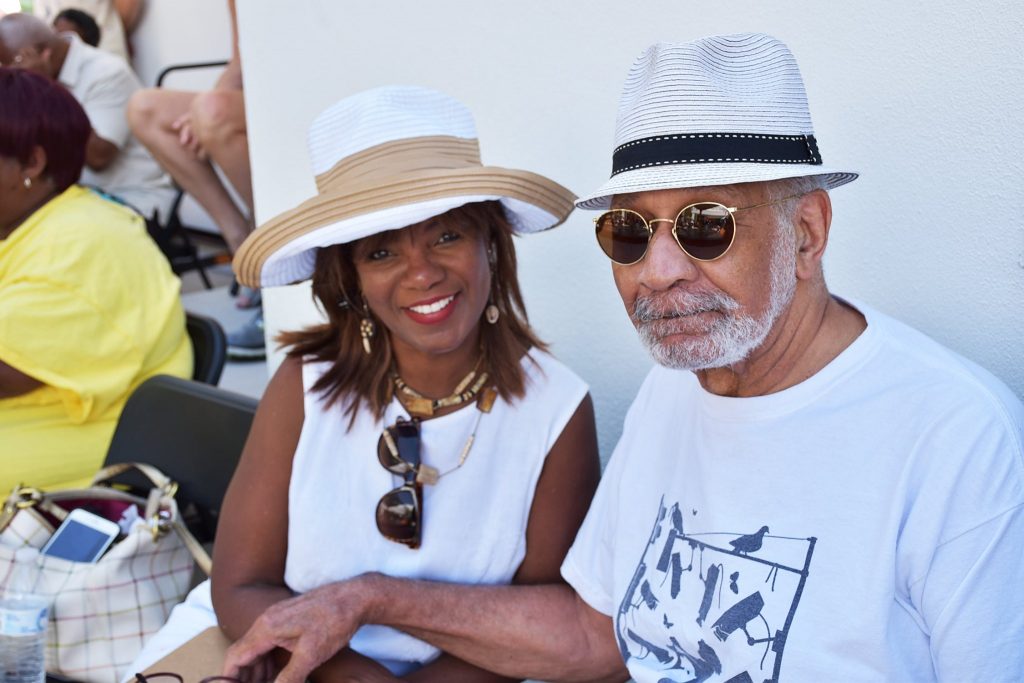
2016
Gentrification erased all recognizable traces of African American life.